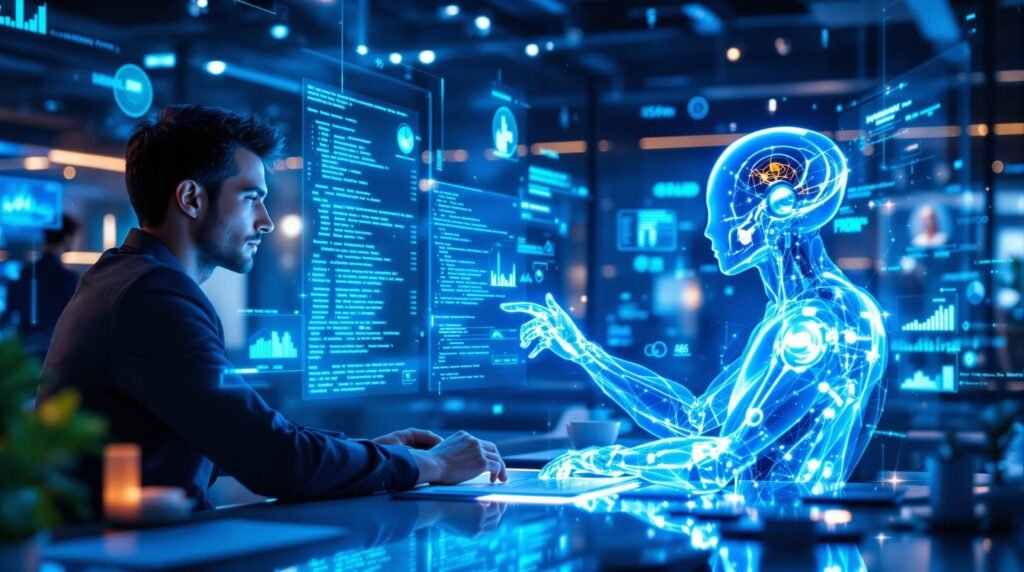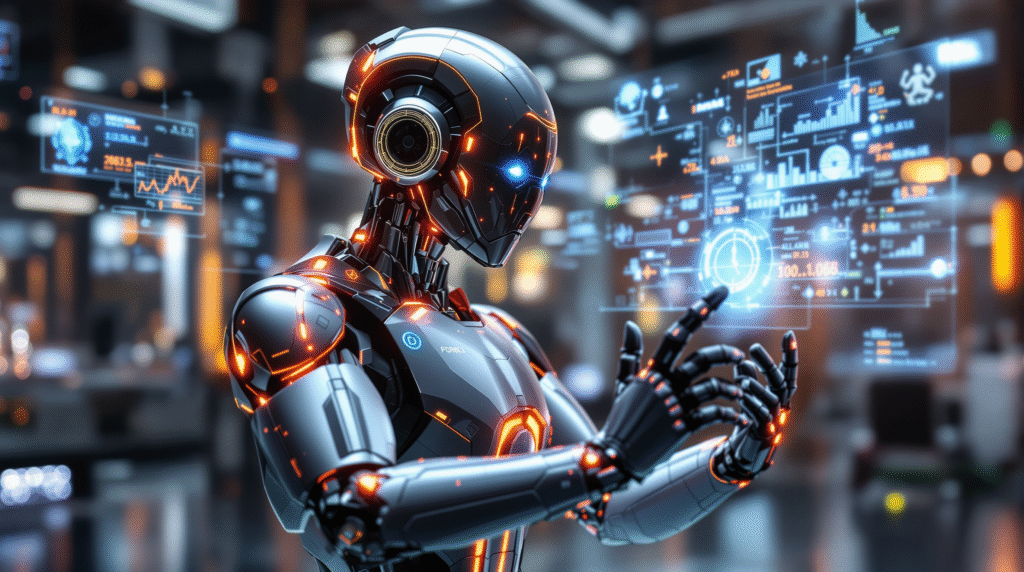Introduction: The New Era of Human-Machine Collaboration
The rapid development of artificial intelligence has ushered in a new era where programmers and AI agents work side by side on modern projects. This collaboration is not just about automating repetitive tasks, but about creating a dynamic partnership in which both human creativity and machine intelligence contribute to innovative solutions. As AI agents become more advanced, they are increasingly capable of understanding context, learning from data, and supporting programmers in complex decision-making processes.
In today’s technology landscape, the boundaries between human and machine roles are becoming more fluid. Programmers are no longer just code writers—they are architects of intelligent systems, mentors for AI models, and partners in a creative process that leverages the strengths of both sides. This new era of collaboration opens up exciting possibilities for faster development, higher-quality software, and entirely new types of applications that were previously out of reach.
Who Is the AI Agent? Definitions and Capabilities
An AI agent, in the context of software development, is an autonomous or semi-autonomous system designed to perceive its environment, process information, and take actions to achieve specific goals. Unlike traditional software tools, AI agents can learn from experience, adapt to new situations, and interact with both data and humans in meaningful ways.
The capabilities of AI agents are diverse and constantly expanding. They can analyze large codebases to detect bugs or vulnerabilities, generate code snippets based on natural language descriptions, and even suggest architectural improvements. Some agents specialize in automating testing, while others assist with documentation or optimize performance. Thanks to advances in natural language processing, many AI agents can communicate with programmers in plain language, making collaboration more intuitive and accessible.
What sets AI agents apart is their ability to continuously learn and improve. By analyzing feedback from programmers and outcomes of their actions, these agents become more effective over time. This adaptability makes them valuable partners in modern projects, where requirements and technologies are constantly evolving. In essence, the AI agent is not just a tool, but a proactive collaborator that helps programmers achieve more than ever before.
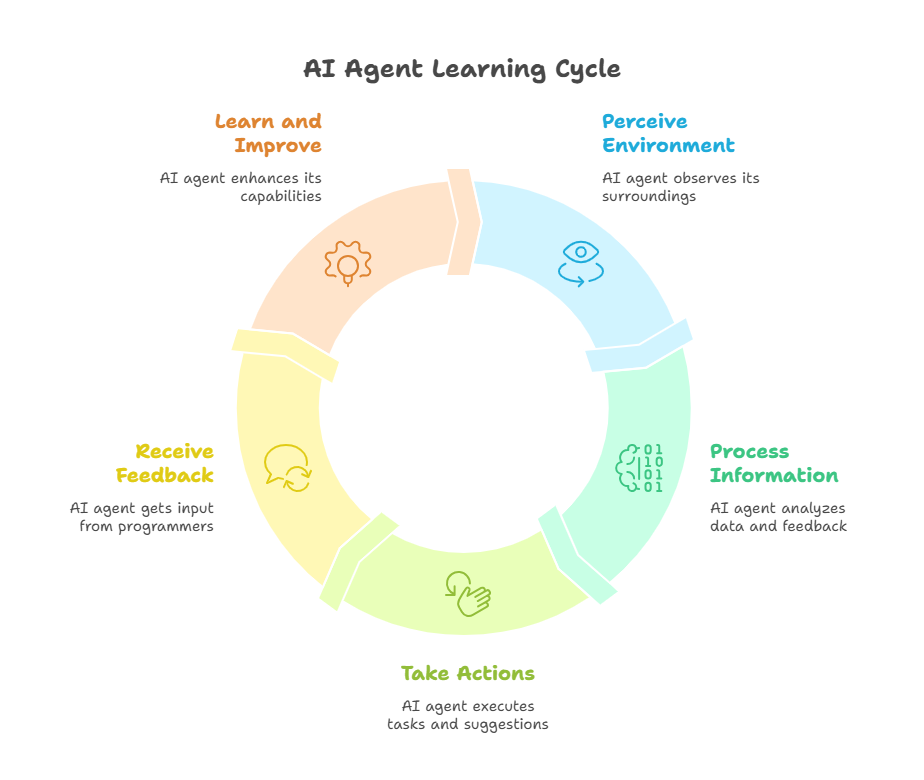
The Role of the Programmer in AI-Driven Projects
In the age of AI-driven projects, the programmer’s role is evolving beyond traditional coding. Programmers are now responsible for designing, training, and supervising intelligent agents, ensuring that these systems align with project goals and ethical standards. Rather than simply writing lines of code, programmers curate datasets, define objectives, and interpret the results produced by AI agents. They act as mentors, guiding the learning process of AI models and providing critical feedback that shapes the agent’s behavior.
Moreover, programmers are essential in integrating AI agents into existing workflows and systems. They must understand both the technical and business requirements, translating them into effective collaborations between humans and machines. This often involves selecting the right AI tools, customizing models for specific tasks, and monitoring the performance of agents in real-world scenarios. The programmer’s expertise in debugging, optimization, and system architecture remains crucial, as AI agents still require human oversight to ensure reliability, security, and fairness.
Ultimately, the programmer becomes a bridge between human creativity and machine intelligence, orchestrating a partnership that leverages the strengths of both. Their ability to adapt, learn new skills, and collaborate with AI agents is key to the success of modern, AI-driven projects.
Designing Effective Collaboration: Tools and Methodologies
Effective collaboration between programmers and AI agents depends on the right combination of tools and methodologies. Modern development environments increasingly offer integrated AI assistants that can suggest code, automate testing, and provide real-time feedback. Tools like GitHub Copilot, Tabnine, and various AI-powered IDE plugins are designed to work seamlessly alongside programmers, enhancing productivity and reducing routine workload.
Methodologies for human-AI collaboration emphasize transparency, iterative feedback, and continuous learning. Agile development practices, for example, can be adapted to include AI agents as active participants in sprints, code reviews, and testing cycles. Clear communication protocols—such as using natural language interfaces or visual dashboards—help programmers understand the reasoning behind AI suggestions and maintain control over the final output. To maximize the benefits of collaboration, it’s important to establish guidelines for when and how to rely on AI agents, as well as mechanisms for monitoring their performance and correcting errors. Regular evaluation and retraining ensure that AI agents remain aligned with project objectives and adapt to changing requirements. By thoughtfully combining advanced tools with proven methodologies, teams can create a productive environment where programmers and AI agents work together to deliver innovative, high-quality solutions.
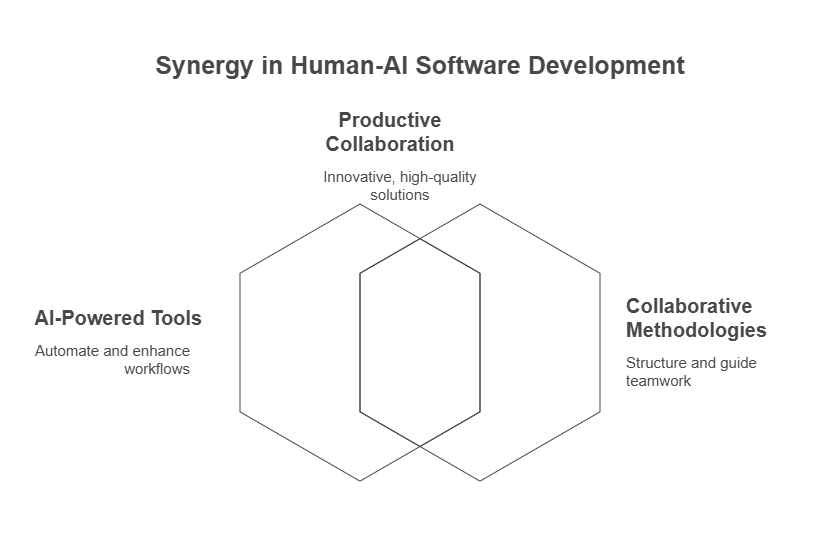
Integrating AI Agents into Software Development Workflows
Integrating AI agents into software development workflows is becoming a standard practice in modern projects. The process typically begins with identifying areas where AI can provide the most value, such as code generation, bug detection, automated testing, or documentation. Once the right use cases are selected, programmers incorporate AI agents into their development environments, often through plugins, APIs, or cloud-based services.
A key aspect of successful integration is ensuring that AI agents complement, rather than disrupt, existing workflows. For example, an AI-powered code assistant can be embedded directly into an IDE, offering real-time suggestions as the programmer writes code. Automated testing agents can be set up to run in the background, flagging issues before code is merged into the main branch. In continuous integration and deployment pipelines, AI agents can analyze build results, predict potential failures, and recommend optimizations.
Collaboration between programmers and AI agents is most effective when there is a clear feedback loop. Programmers review and refine the suggestions made by AI, providing corrections that help the agent learn and improve. Over time, this partnership leads to more efficient development cycles, higher code quality, and faster delivery of new features. Integrating AI agents thoughtfully allows teams to harness the power of artificial intelligence while maintaining control and oversight throughout the software development lifecycle.
Real-World Examples: Success Stories and Lessons Learned
The impact of AI agents in software development is best illustrated by real-world examples. Many technology companies now rely on AI-powered tools to accelerate their workflows and improve product quality. For instance, large organizations use AI agents to automatically review code for security vulnerabilities, catching issues that might be missed during manual reviews. Startups leverage AI-driven testing agents to simulate user interactions and identify bugs early in the development process, reducing time to market.
One notable success story is the adoption of AI code assistants, such as GitHub Copilot, which help developers write code faster and with fewer errors. Teams report that these tools not only boost productivity but also serve as valuable learning resources, suggesting best practices and alternative solutions. In another example, companies in the financial sector use AI agents to monitor transaction logs, detect anomalies, and prevent fraud, demonstrating the versatility of intelligent agents beyond traditional software development.
However, these successes also come with important lessons. Effective use of AI agents requires ongoing monitoring, regular updates, and a willingness to adapt workflows as technology evolves. Teams that invest in training and foster a culture of collaboration between humans and AI tend to achieve the best results. These real-world experiences highlight both the transformative potential of AI agents and the importance of thoughtful implementation to maximize their benefits.
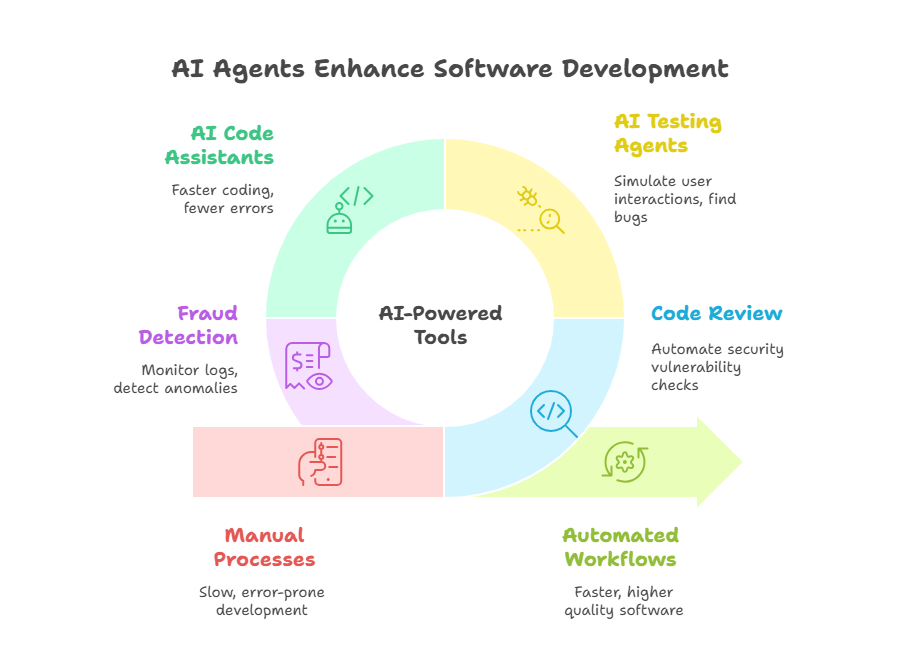
Challenges and Solutions in Human-AI Teamwork
Working with AI agents presents unique challenges that teams must address to ensure successful collaboration. Common obstacles include managing the accuracy of AI suggestions, maintaining code quality, and building trust between programmers and AI systems. Here’s an example of how to implement a basic monitoring system for AI agent performance:
python
import logging
from datetime import datetime
from typing import Dict, List, Optional
class AIAgentMonitor:
def __init__(self):
self.logger = self._setup_logger()
self.performance_metrics = {
'accuracy': [],
'response_time': [],
'acceptance_rate': []
}
def _setup_logger(self) -> logging.Logger:
logger = logging.getLogger('ai_agent_monitor')
logger.setLevel(logging.INFO)
handler = logging.FileHandler('ai_agent_collaboration.log')
formatter = logging.Formatter('%(asctime)s - %(levelname)s - %(message)s')
handler.setFormatter(formatter)
logger.addHandler(handler)
return logger
def track_suggestion(self, suggestion_type: str, was_accepted: bool, response_time: float):
self.logger.info(f"AI Suggestion: {suggestion_type}, Accepted: {was_accepted}, Time: {response_time}")
self.performance_metrics['acceptance_rate'].append(1 if was_accepted else 0)
self.performance_metrics['response_time'].append(response_time)
def generate_report(self) -> Dict[str, float]:
return {
'avg_acceptance_rate': sum(self.performance_metrics['acceptance_rate']) / len(self.performance_metrics['acceptance_rate']),
'avg_response_time': sum(self.performance_metrics['response_time']) / len(self.performance_metrics['response_time'])
}
# Example usage
monitor = AIAgentMonitor()
monitor.track_suggestion("code_completion", True, 0.5)
monitor.track_suggestion("bug_detection", False, 0.3)
print("Performance Report:", monitor.generate_report())
# Created/Modified files:
# - ai_agent_collaboration.log8. Best Practices for Productive Collaboration
Establishing best practices is crucial for maximizing the benefits of human-AI collaboration. Here’s an example of implementing a collaborative workflow system that incorporates these practices:
python
from dataclasses import dataclass
from enum import Enum
from typing import List, Optional
import json
from datetime import datetime
class CollaborationType(Enum):
CODE_REVIEW = "code_review"
PAIR_PROGRAMMING = "pair_programming"
CODE_GENERATION = "code_generation"
@dataclass
class CollaborationSession:
session_id: str
collaboration_type: CollaborationType
start_time: datetime
end_time: Optional[datetime] = None
feedback_score: Optional[int] = None
comments: List[str] = None
class AICollaborationManager:
def __init__(self):
self.sessions: List[CollaborationSession] = []
self.best_practices = {
"code_review": ["Review AI suggestions carefully", "Document override reasons"],
"pair_programming": ["Set clear objectives", "Regular feedback intervals"],
"code_generation": ["Verify generated code", "Test edge cases"]
}
def start_session(self, collaboration_type: CollaborationType) -> CollaborationSession:
session = CollaborationSession(
session_id=f"session_{datetime.now().strftime('%Y%m%d_%H%M%S')}",
collaboration_type=collaboration_type,
start_time=datetime.now(),
comments=[]
)
self.sessions.append(session)
return session
def end_session(self, session_id: str, feedback_score: int, final_comment: str):
for session in self.sessions:
if session.session_id == session_id:
session.end_time = datetime.now()
session.feedback_score = feedback_score
session.comments.append(final_comment)
self._save_session_data(session)
break
def _save_session_data(self, session: CollaborationSession):
session_data = {
"session_id": session.session_id,
"type": session.collaboration_type.value,
"start_time": session.start_time.isoformat(),
"end_time": session.end_time.isoformat() if session.end_time else None,
"feedback_score": session.feedback_score,
"comments": session.comments
}
with open(f"collaboration_sessions/{session.session_id}.json", "w") as f:
json.dump(session_data, f, indent=4)
# Example usage
manager = AICollaborationManager()
session = manager.start_session(CollaborationType.PAIR_PROGRAMMING)
print(f"Started session: {session.session_id}")
print(f"Best practices for {session.collaboration_type.value}:",
manager.best_practices[session.collaboration_type.value])
manager.end_session(session.session_id, 5, "Successful pair programming session with AI agent")
# Created/Modified files:
# - collaboration_sessions/{session_id}.jsonThese code examples demonstrate practical implementations of monitoring and managing AI-human collaboration, incorporating best practices such as:
Tracking and measuring collaboration effectiveness
Maintaining detailed session logs
Following established guidelines for different types of collaboration
Collecting and analyzing feedback
Documenting decisions and outcomes
The Future of Programming with AI Agents
The future of programming is being shaped by the growing capabilities and accessibility of AI agents. As these systems become more advanced, they are expected to take on increasingly complex roles within software development teams. In the coming years, AI agents will not only assist with code generation and debugging but also participate in architectural design, project management, and even creative problem-solving.
One of the most exciting trends is the emergence of collaborative multi-agent systems, where several AI agents with different specializations work together—and with human programmers—to tackle large, multifaceted projects. These agents will be able to communicate, delegate tasks, and learn from each other, creating a dynamic and adaptive development environment. For programmers, this means a shift from manual coding to orchestrating and supervising intelligent systems, focusing more on high-level strategy, innovation, and ethical considerations.
Another important direction is the democratization of AI tools. As user interfaces become more intuitive and natural language processing improves, even those without deep technical backgrounds will be able to leverage AI agents in their work. This will open up software development to a broader range of people, fostering diversity and accelerating innovation across industries.
The future will also bring new challenges, such as ensuring the security, fairness, and transparency of AI-driven systems. However, with thoughtful design and responsible implementation, the collaboration between programmers and AI agents promises to unlock unprecedented levels of productivity and creativity.
Conclusion: Embracing the Synergy of Human and Artificial Intelligence
The integration of AI agents into modern software projects marks a turning point in the evolution of programming. Rather than replacing human expertise, AI agents are becoming valuable partners—augmenting skills, automating routine tasks, and enabling programmers to focus on what they do best: solving complex problems and driving innovation.
To make the most of this synergy, it is essential to foster a culture of openness, continuous learning, and ethical responsibility. Teams that embrace collaboration with AI agents, invest in best practices, and remain adaptable to new technologies will be best positioned to thrive in the rapidly changing landscape of software development.
Here is a simple Python code example that demonstrates how a team might track the adoption and impact of AI agents over time, helping to ensure that the collaboration remains effective and aligned with project goals:
python
import json
from datetime import datetime
class AdoptionTracker:
def __init__(self, filename='ai_agent_adoption.json'):
self.filename = filename
self.records = []
def log_adoption(self, project_name, team_size, ai_agent_used, impact_score, notes):
record = {
'project_name': project_name,
'team_size': team_size,
'ai_agent_used': ai_agent_used,
'impact_score': impact_score,
'notes': notes,
'timestamp': datetime.now().isoformat()
}
self.records.append(record)
self._save()
def _save(self):
with open(self.filename, 'w') as f:
json.dump(self.records, f, indent=4)
def average_impact(self):
if not self.records:
return None
return sum(r['impact_score'] for r in self.records) / len(self.records)
# Example usage
tracker = AdoptionTracker()
tracker.log_adoption("InventoryApp", 6, "Code Assistant", 5, "Significant reduction in bug count and faster releases.")
tracker.log_adoption("HealthPortal", 10, "Test Automation Agent", 4, "Improved test coverage and team satisfaction.")
print("Average impact score:", tracker.average_impact())
# Created/Modified files:
# - ai_agent_adoption.jsonGame Theory in Intelligent Agents
Quantum Programming with AI Agents: New Horizons in Computing
From Pull Request to Deployment: AI Agents in the Review Process
